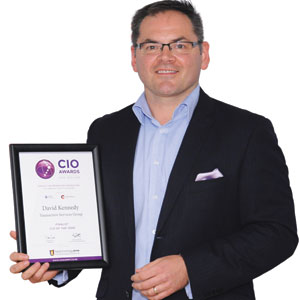THANK YOU FOR SUBSCRIBING

Building Safer and Smarter Cities of the Future
Nelson Gonzalez, Assistant Innovation and Technology Director and Chief Information Security Officer at the City of Coral Gables


Nelson Gonzalez, Assistant Innovation and Technology Director and Chief Information Security Officer at the City of Coral Gables
Nelson Gonzalez is a seasoned professional with two decades of expertise in design, engineering and supporting network telecommunications and cybersecurity infrastructure. Currently serving as the Assistant Innovation and Technology Director and Chief Information Security Officer (CISO) at the City of Coral Gables, he also holds the role of the local agency security officer with the Florida Department of Law Enforcement (FDLE).
Gonzalez is known for his dynamic approach toward overseeing physical and cybersecurity operations for the city, managing infrastructure-related capital improvement projects, participating in the tech assessment of smart city infrastructure deployments, and running compliance programs. His extensive experience includes contributing to the design and build of the city’s police and fire headquarters and operating and upgrading the regional emergency operations center with a regional 911 system, showcasing a comprehensive understanding of city infrastructure and operations.
In an interview with Govt CIO Outlook, Gonzalez shares his insights on the recent developments in the smart city industry with a focus on technology implementation and cybersecurity measures.
What are some recent developments in the industry over the last 18 to 24 months?
As a municipality, we've witnessed noteworthy developments in the recent past. Recently, we were recognized among the top seven smart cities globally with several national awards. Our engagement with peer municipalities has exposed us to diverse approaches in smart city planning. These approaches span extensive infrastructure deployment, introducing various modes of communication and layers of redundancy, citizen services portals, kiosks, public Wi-Fi, and various sensors to monitor the quality of water, air, and other environmental factors and promote smart policing.
Our smart city journey commenced with a focus on environmental monitoring and public safety policing. In the realm of public safety enhancement, we successfully implemented smart policing initiatives, leveraging advanced CCTV cameras and backend video analytics.
A poignant example highlights the effectiveness of our efforts, as we swiftly located a lost child during a city event using a video analytics suite. This underscores the tangible and impactful outcomes achievable through our smart city endeavors.
Do you have any words of advice for your fellow professionals who are about to embark on similar ventures?
City executives often encounter common hurdles, such as obtaining approval, securing funding, and establishing effective procurement channels, during initiatives taken for technology deployment. These challenges persist across the C-suite, impacting individuals from CIOs to CISOs and CTOs.
To navigate these challenges successfully, a critical first step is aligning the initiatives with the strategic goals and plans of the organization. This strategic alignment enhances the likelihood of obtaining management approval and also streamlines the procurement process. Strategic collaboration with peers is also paramount in overcoming these obstacles.
Another notable aspect to take into consideration is that government organizations like municipalities routinely engage in construction activities. The requirement is to enter capital improvement projects within public works departments and actively advocate for technology and security to become integral components of construction project budgets. This collaborative approach will help position technology as an indispensable utility and facilitate a more streamlined process for its approval, funding and procurement.
How do you envision the future of the industry?
The enterprise IT’s shift to a borderless model introduces challenges, particularly when innovations necessitate cloud integration and the enterprise team is not actively engaged. Often, a disconnect arises between the teams responsible for maintaining security measures and for implementing new applications on the cloud, leading to potential security vulnerabilities.
The crucial role of cybersecurity cannot be overstated. It must cease to be an afterthought and instead become an integral part of the technology implementation process.
The need is to coordinate and integrate different parts of the IT infrastructure, particularly when adopting new technologies like cloud services. Regular communications between different teams within the organization can help prevent silos and ensure that everyone is working towards common goals. Horizontal integration across teams is crucial, with cybersecurity being the central part of the plan to ensure a secure transition.
Organizations should ensure that their security, enterprise, and application teams are involved early in the process of adopting new technologies. This can help identify potential security risks and ensure that appropriate security measures are in place.
While transitioning from a border-aligned enterprise system to a borderless enterprise model with cloud services, it's crucial to extend existing security strategies to the cloud. The focus should be on implementing brokers and improving their authentication, identity management and API infrastructure.
In this evolving landscape, the crucial role of cybersecurity cannot be overstated. It must cease to be an afterthought and instead become an integral part of the technology implementation process. This shift in approach is necessary to ensure adaptability and effectiveness in the modern IT environment, where the borderless enterprise IT systems are the new norm.
Weekly Brief
I agree We use cookies on this website to enhance your user experience. By clicking any link on this page you are giving your consent for us to set cookies. More info
Read Also













